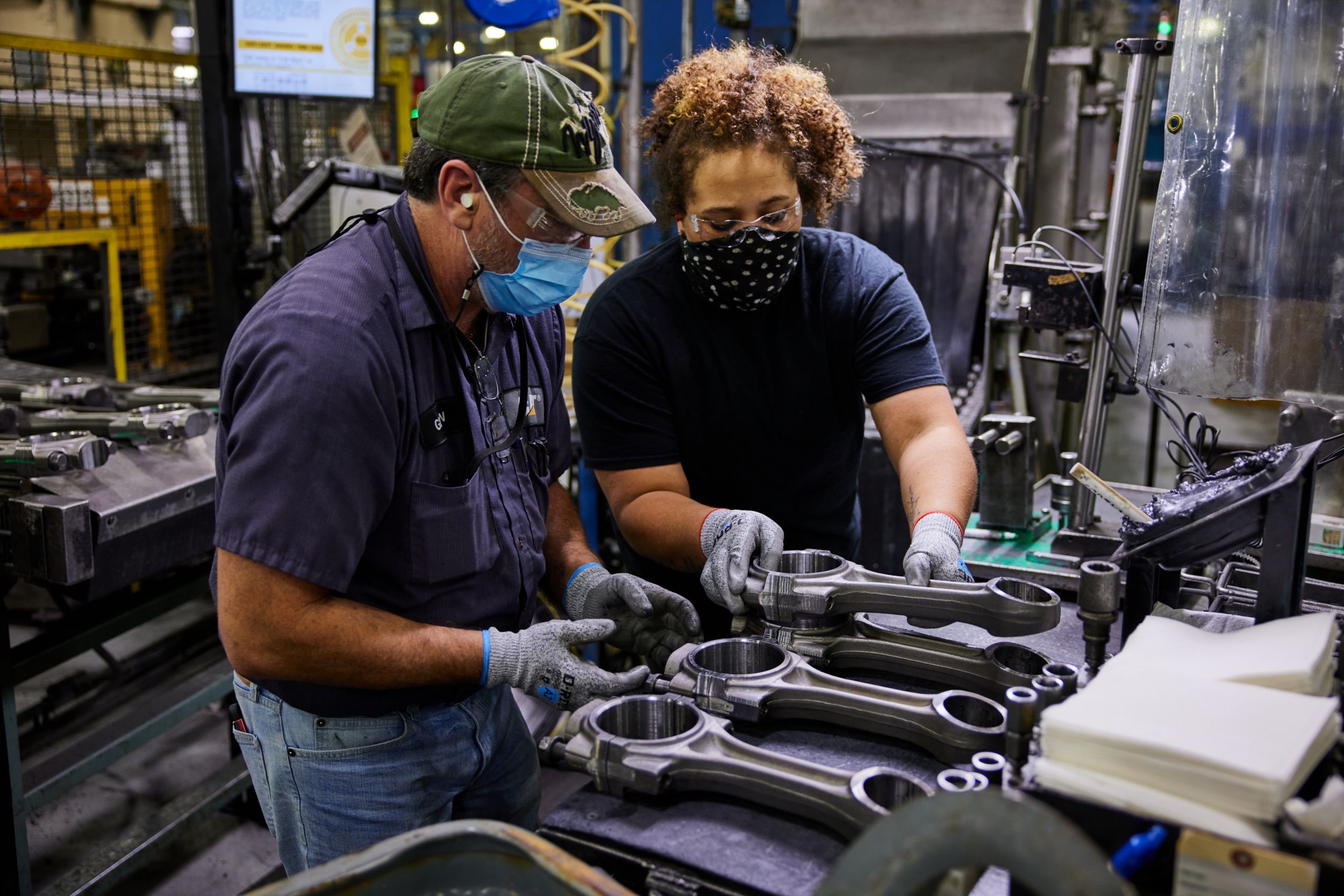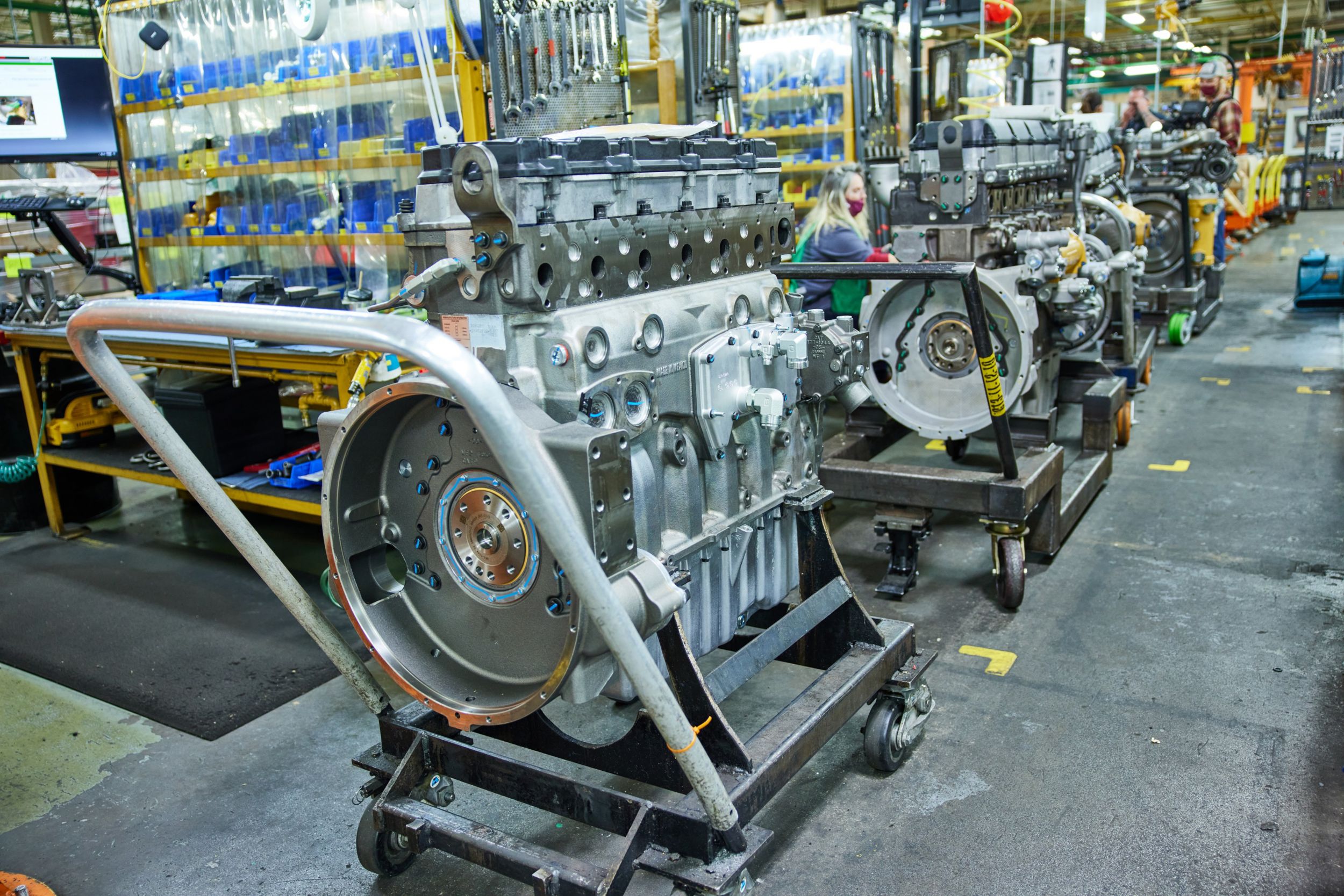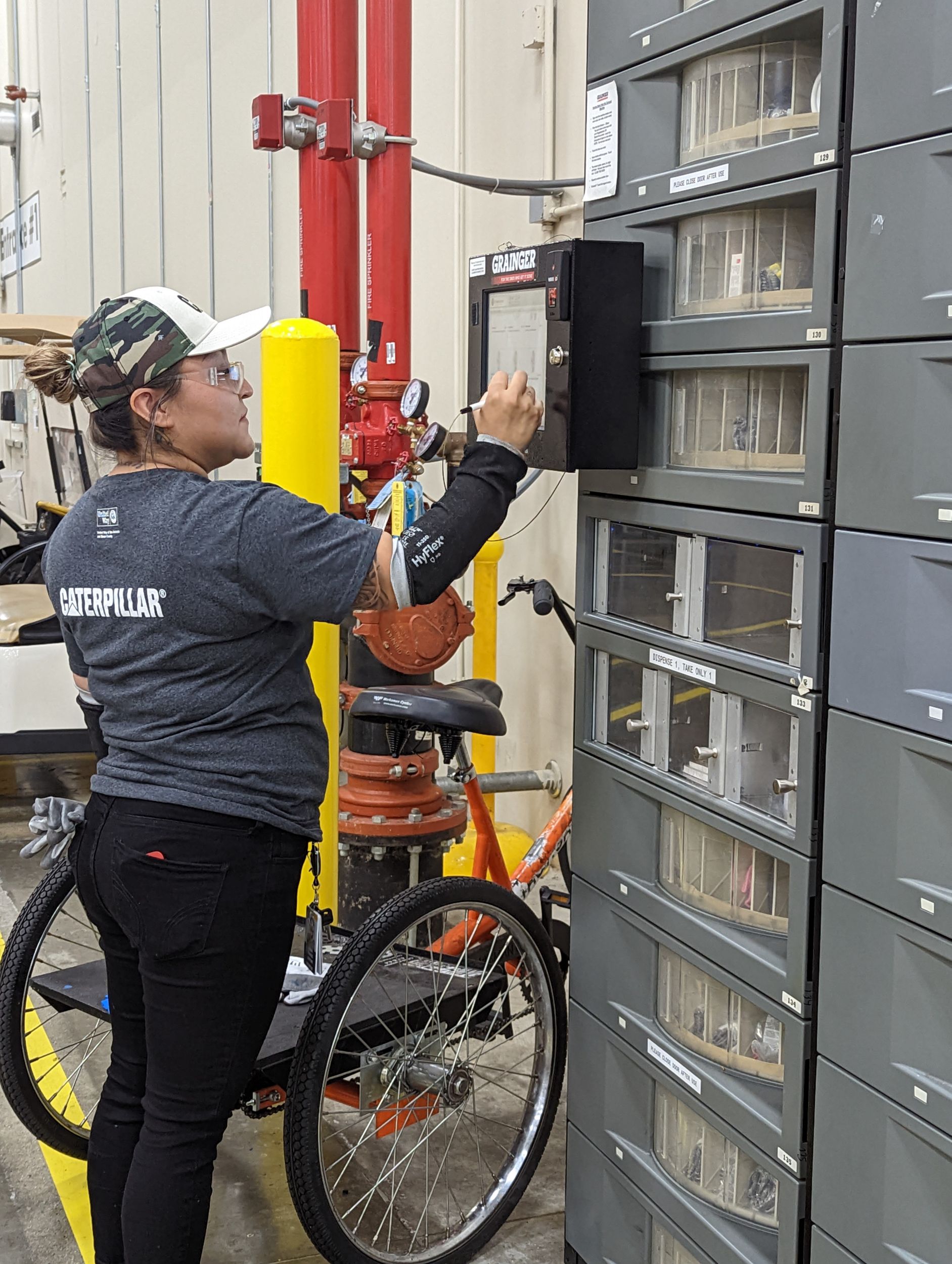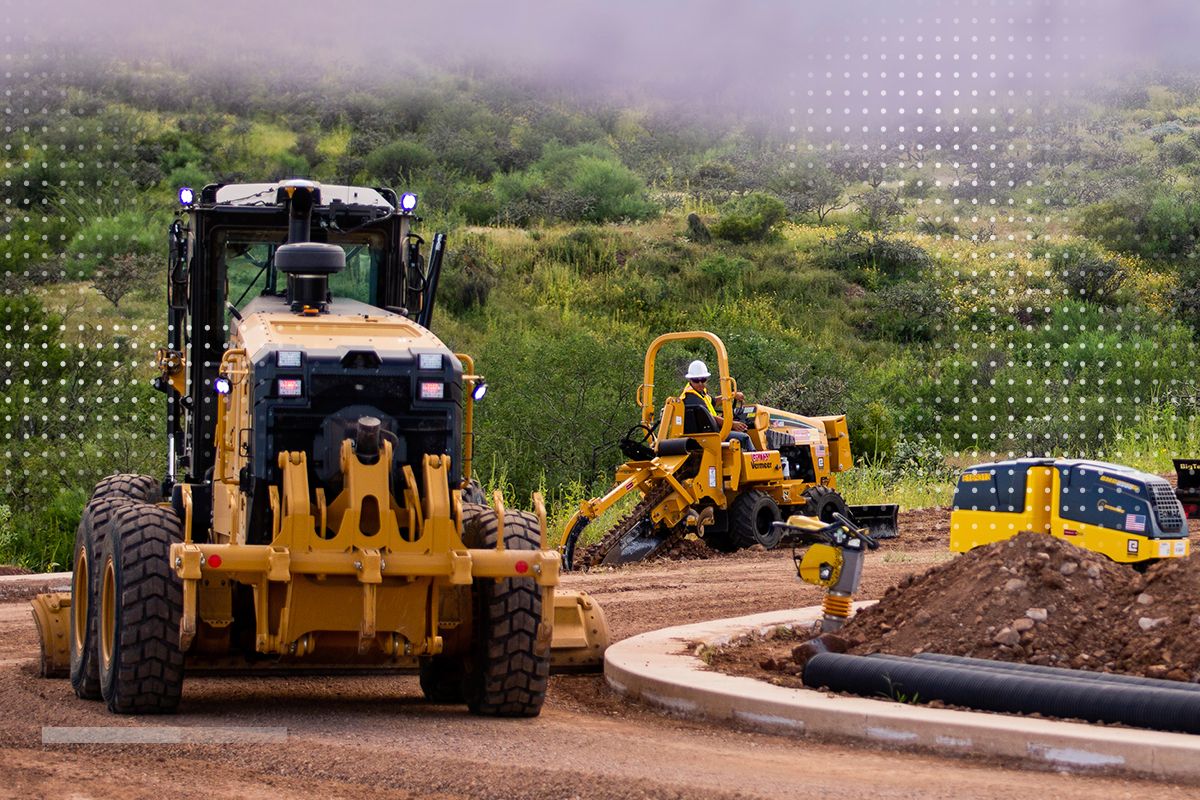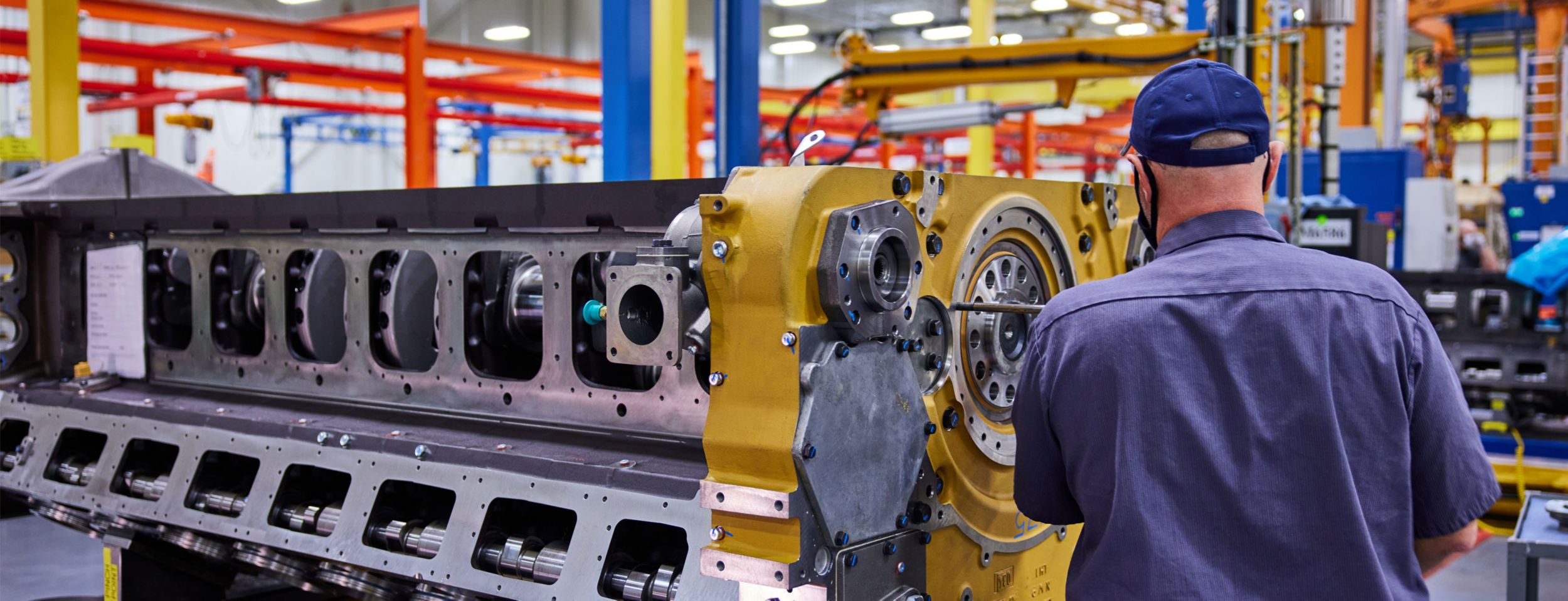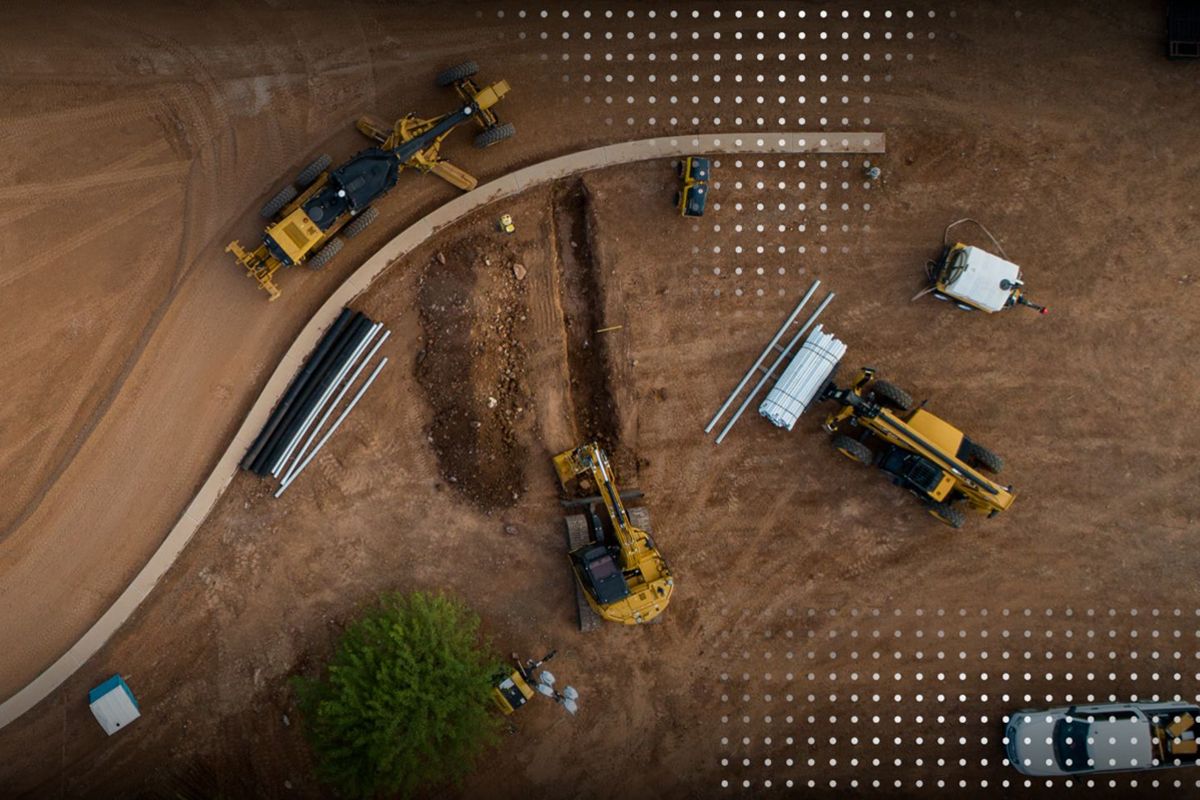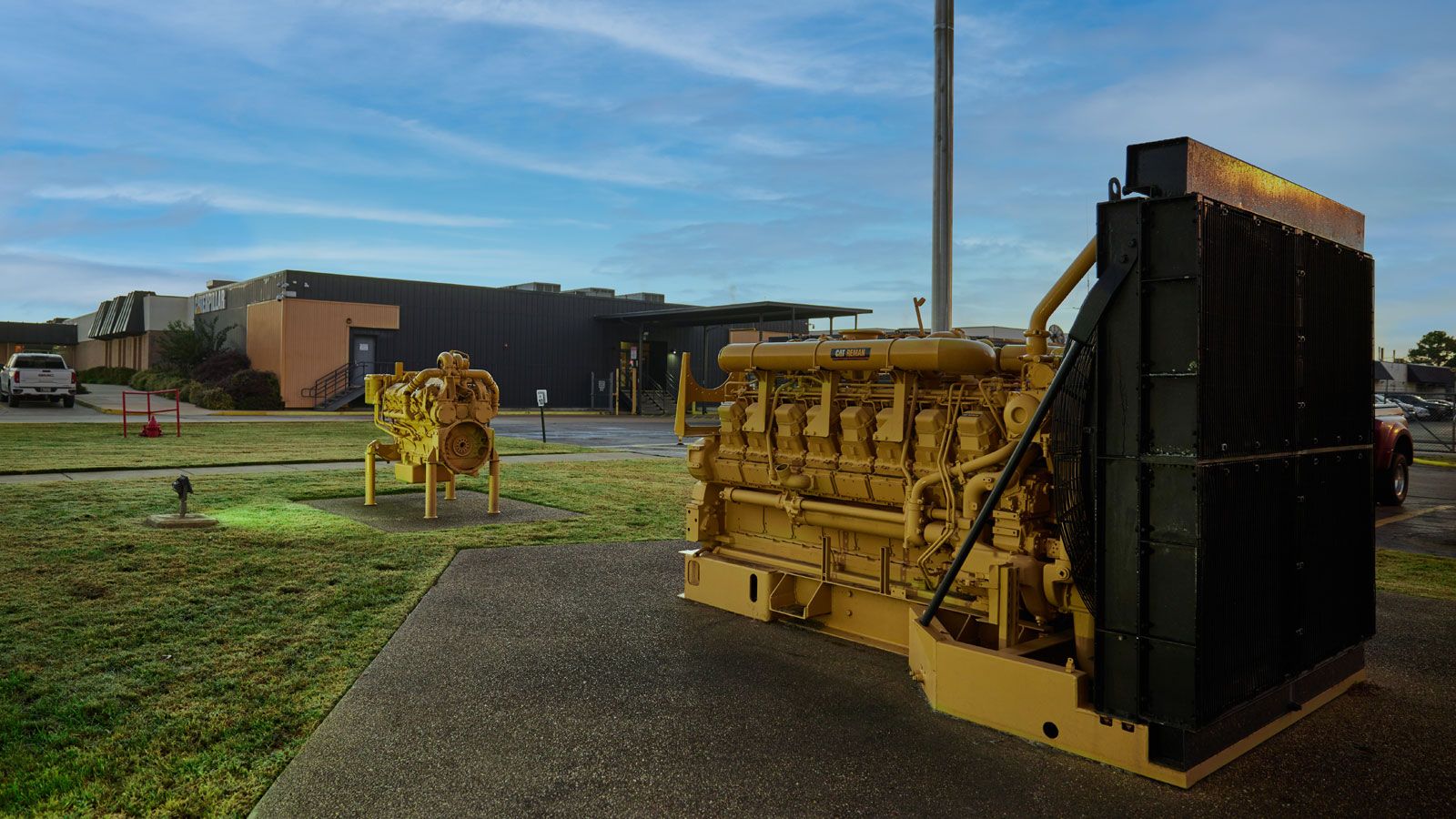

Sign In
Welcome! Sign In to personalize your Cat.com experience
If you already have an existing account with another Cat App, you can use the same account to sign in here
Register Now
One Account. All of Cat.
Your Caterpillar account is the single account you use to log in to select services and applications we offer. Shop for parts and machines online, manage your fleet, go mobile, and more.
Account Information
Site Settings
Security
Manufacturing Is So Nice,
We Do It Twice
By Jenni Gritti Probst and Kate Gallagher | Posted October 4, 2022
All around the world, manufacturing is a critically important industry that continues to grow economies, improve living standards and generate innovation and competition. At Caterpillar, manufacturing is at the core of everything we do – from mining trucks to the engines that go inside. To celebrate Manufacturing month we’re exploring the people and places that help bring those engines inside these machines to life... sometimes even twice!
Down the Line
We start our engine manufacturing journey in San Antonio, Texas where a Cat® C7 engine starts on the line in one of our machining facilities. Referred to as the “Machine Shop,” employees here produce the engine block. Going down the line, the block takes about a week to create from start to finish, each day going through different reports and checks. It must pass eight quality checks per block and three tests to ensure it’s up to Caterpillar’s stringent standards.
Lauren Martinez, Quality Inspector at the San Antonio Machine Shop, has been working on the C7 line for a year and a half, ensuring the engines pass each quality check. Lauren says the most important thing about her job is quality. Finding any issues right away and fixing them, staying on track and in order, and producing quality products are all parts of the job she enjoys most.
“Taking pride in quality products is really important. We have great people and a good work environment. I really love what I do!” - Lauren Martinez, Quality Inspector at the San Antonio Machine Shops
Once the block is complete, it is shipped to the nearby Seguin, Texas facility, where the rest of the engine is assembled. The C7 engine takes one full day to complete down the line. The engine passes through around 80 stations, three quality checks and two main tests before it moves on to paint and is shipped for installation into a machine.
Seguin Team Led, Erika Ramos, enjoys working with everyone on the C7 line. While she leads many production workers in the manufacturing process, she feels she learns just as much from her employees as they do from her.
“This job challenges me and makes me feel knowledgeable. I like to learn from -- and help -- everyone I am able. It also allows me to interact with people a lot, and I really enjoy that.” - Erika Ramos, Seguin Team Lead
Now that the engine’s assembled, it’s time to go in a machine. Cat engines power thousands of types of applications in a wide range of industries like construction, agriculture, material handling, electric power and more. And because these machines are doing some of the world’s toughest jobs, that means the engine needs to be tough and built to last the life of the machine. That’s where things really get interesting...
A Journey Through Time
In 1973, Caterpillar became the first American company with its own truck engine remanufacturing facility. Before then, an aging engine was simply replaced by a new engine and the old one disposed of... iron that still had a lot of life left in it. Today, that C7 engine wouldn’t end its first lifecycle in a scrap yard – it can be returned to a Cat dealer, then to Caterpillar, as a “core” that can be remanufactured to like new quality.
When core is returned, it could go to Fargo, North Dakota, Shanghai, China, or any of our eight Cat Reman facilities worldwide. However, since this C7 Engine was working in Texas, it’s logical to assume that it would go to our Corinth, Mississippi facility.
Renea Miller, Section Manager 4 in Core Receiving/Outbound in Corinth, is enthusiastic about working with cores, saying, “It is cool. A lot of this material, you think about, ‘Where did it come from? Who's touched this other than me? What has this engine, what has this block, what has this component seen from across the oceans and trains? Where has it been?’ You just think about that journey that that engine or block has been on. It's amazing.”
Once the core is in a Cat Reman facility, it’s disassembled to its smallest piece parts, losing its original identity. Then, the individual pieces are cleaned of microscopic debris and inspected. Next, the components go through laser cladding, machining, metal deposition and other advanced salvage procedures.
Megan Pace, Corinth Team Lead-Engine, Cranks & Blocks Reclaim, really is fascinated by her part of the remanufacturing process, saying, “I think my favorite part is being in the middle. Reclaim is in the middle [of the Cat Reman process], so I can see it being disassembled. I can see the parts being cleaned. And then when we send the parts to assembly, I've always thought that parts going off a different engine and being on a new engine, it's just amazing to me how we can do that.”
After salvage, the remanufactured components are reassembled into a like new C7 engine, following the original OEM specifications and incorporating all the latest Caterpillar engineering updates. It would be tested to match the same standards as new Cat parts and given a new lifecycle.
The Cycles Continues
Once the remanufacturing process is complete, this C7 engine will go back to a Cat dealership and ultimately to a new customer... a customer who can put the C7 back to work, knowing they’ve contributed to the circular economy with their purchase.
What do we mean by that exactly?
Cat Reman offers sustainability benefits – by saving that core and remanufacturing it, approximately 85% less water and raw materials are used and 85% less waste is generated when compared to the manufacture of a new part.1
In the end, it’s hard to know just how many times this C7 Engine will get a new lifecycle, working hard and offering sustainable benefits. Who knows, it could go halfway around the world or end up working right on your jobsite...
1. Represents environmental impacts from remanufacturing process for a Cat Reman engine and components as compared to manufacturing a new, comparable engine and components. Does not include impacts elsewhere in our value chain. Based on a 2006 study done by Caterpillar on the 3412 cylinder head.




Jenni Gritti Probst
Contributor
Not one to walk away from the chance to tell a good tale, Jenni spends her days crafting and sharing stories of the people, products and services that make the world a better place. When she’s not working her dream job at Caterpillar, she’s usually outdoors hiking, exploring, and playing in the dirt.

Kate Gallagher
Contributor
Kate is a passionate supporter of the Oxford comma and of Cat products. With 20 years of experience in the marketing communications space, she is currently using her skills to help develop informative, engaging Cat Reman marketing content. In her free time, she can generally be found with her nose in a book or out snowboarding.
Related Stories
-
The Secret Sauce of Cat® Reman
Want to know what makes Cat® Reman parts unlike other products on the market? Join members of the Caterpillar team as they detail the ingredients — the affordability, availability and sustainability benefits — that make up the secret sauce of Cat Reman.
SEE WHAT IT’S MADE OF -
Sustainable choices from Caterpillar
Prioritise sustainable choices for your fleet and operation with Caterpillar.
Learn More -
Cat® Reman | The Remanufacturing Process
Discover how Cat® Reman products offer like new performance for a fraction of the cost of new parts. With state-of-the-art quality, cleaning, design and testing techniques, the Caterpillar remanufacturing process provides customers with resilient repair and replacement options.
Learn More
